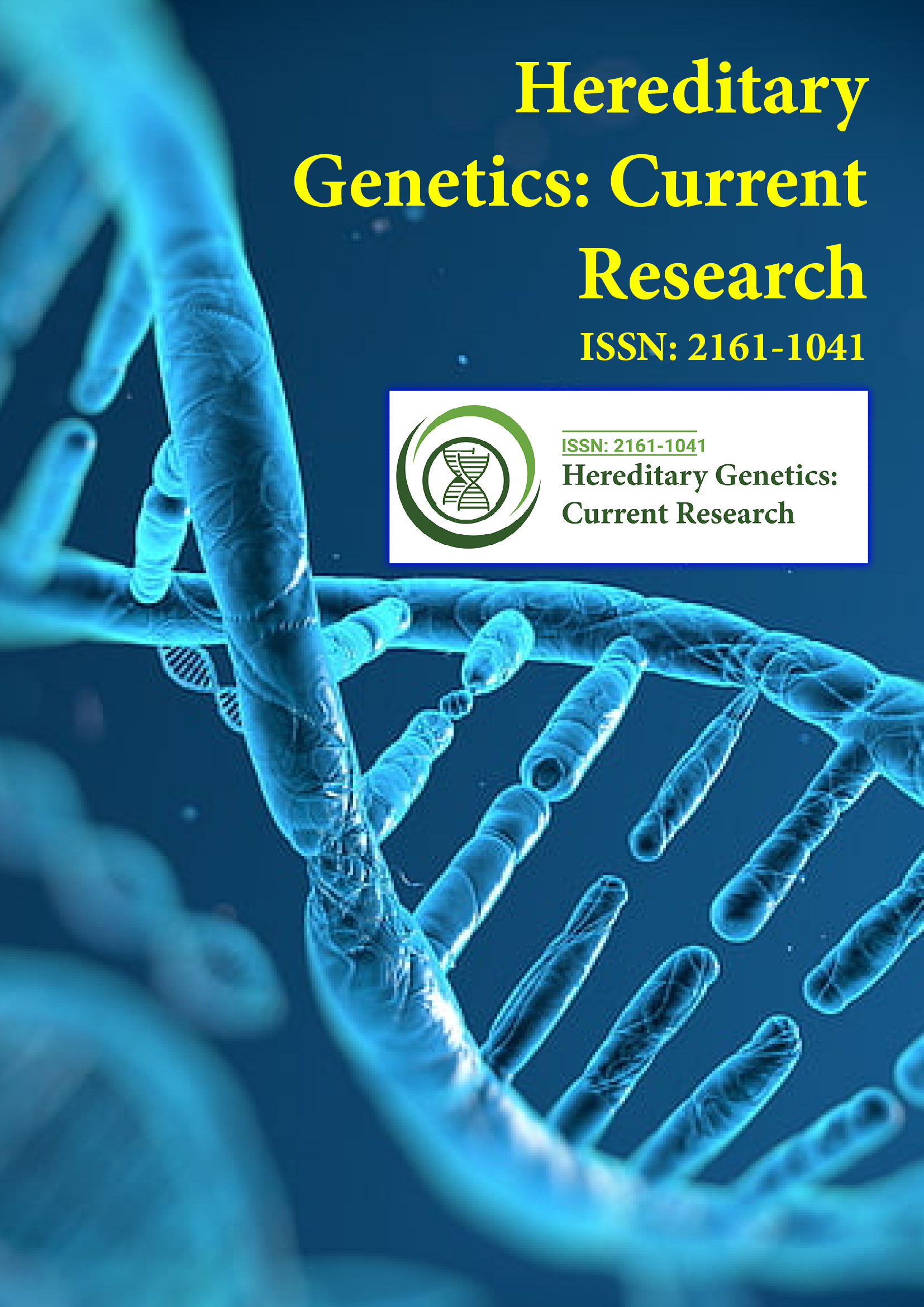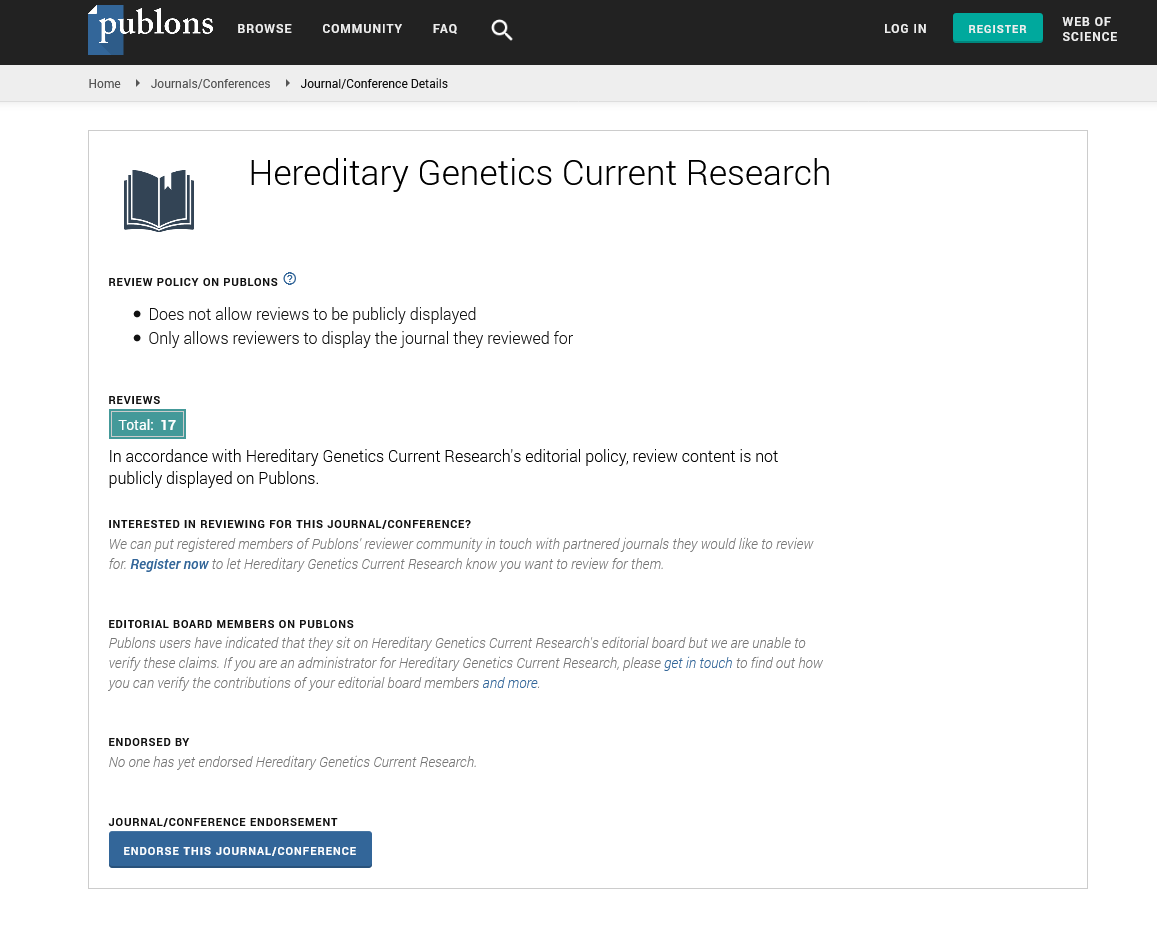Indexed In
- Open J Gate
- Genamics JournalSeek
- CiteFactor
- RefSeek
- Hamdard University
- EBSCO A-Z
- NSD - Norwegian Centre for Research Data
- OCLC- WorldCat
- Publons
- Geneva Foundation for Medical Education and Research
- Euro Pub
- Google Scholar
Useful Links
Share This Page
Journal Flyer

Open Access Journals
- Agri and Aquaculture
- Biochemistry
- Bioinformatics & Systems Biology
- Business & Management
- Chemistry
- Clinical Sciences
- Engineering
- Food & Nutrition
- General Science
- Genetics & Molecular Biology
- Immunology & Microbiology
- Medical Sciences
- Neuroscience & Psychology
- Nursing & Health Care
- Pharmaceutical Sciences
Commentary - (2023) Volume 12, Issue 1
Thalassemia: A Genetic Blood Disorder its Signs, Symptoms and Management
William Twain*Received: 06-Mar-2023, Manuscript No. HGCR-23-19960; Editor assigned: 09-Mar-2023, Pre QC No. HGCR-23-19960 (PQ); Reviewed: 23-Mar-2023, QC No. HGCR-23-19960; Revised: 30-Mar-2023, Manuscript No. HGCR-23-19960 (R); Published: 06-Apr-2023, DOI: 10.35248/2161-1041.23.12.234
Description
Thalassemia are genetic blood disorders that cause low haemoglobin production. Symptoms vary according to kind and might range from none to severe. Anemia can range from moderate to severe (low red blood cells or hemoglobin). Anemia can cause fatigue and pallor of the skin. Bone issues, an enlarged spleen, yellowish skin, and black urine are also possible. Children may experience slow development. Thalassemias are hereditary genetic disorders. There are two major types: alpha and beta thalassemia. The severity of alpha and beta thalassemia is determined by how many of the four alpha globin genes or two beta globin genes are absent. Blood tests, such as a complete blood count, specific haemoglobin tests, and genetic testing, are often used to make a diagnosis. Prenatal testing can provide a diagnosis before delivery. Treatment is determined on the nature and severity of the condition.
Patients with more severe illness may require frequent blood transfusions, iron chelation, and folic acid. Iron chelation can be accomplished with deferoxamine, deferasirox, or deferiprone. A bone marrow transplant is sometimes a possibility. Complications from transfusions may include iron excess, which can lead to heart or liver damage, infections, and osteoporosis. If the spleen develops too big, it may need to be surgically removed.
Patients with thalassemia who do not respond well to blood transfusions can be given hydroxyurea or thalidomide, or a combination of the two. The sole FDA-approved medication for thalassemia is hydroxyurea. Patients who received 10 mg/kg hydroxyurea daily for a year had considerably better haemoglobin levels, and it was a well-tolerated medication for patients who did not respond well to blood transfusions.
Thalidomide is another hemoglobin-inducer that has not been studied in a clinical context. The combination of thalidomide and hydroxyurea effectively increased haemoglobin levels in both transfusion-dependent and non-transfusion-dependent patients.
Signs
Signs of Iron overload, Infection, Bone deformities, Enlarged spleen, Slowed growth rates and Heart problems are seen in people with thalassemia.
Symptoms
Iron overload: People with thalassemia might have an iron overload in their body due to the illness or repeated blood transfusions. Too much iron can harm the heart, liver, and endocrine system, which includes glands that generate hormones that govern bodily activities. Excessive iron deposits define the injury. Almost all individuals with beta-thalassemia accrue potentially lethal iron levels in the absence of effective iron chelation treatment.
Infection: The risk of infection is higher in people with thalassemia. In particular, if the spleen was removed, this is true.
Bone deformities: Thalassemia causes bone marrow to enlarge, causing bones to broaden. This can cause aberrant bone structure, particularly in the face and skull. Bone marrow enlargement also thins and brittle bones, increasing the risk of fracture.
Enlarged spleen: The spleen assists in infection combating and filters undesirable material such as old or broken blood cells. Thalassemia is frequently associated with the loss of a high number of red blood cells, and the removal of these cells causes the spleen to expand. Splenomegaly can exacerbate anaemia and shorten the survival of transfused red blood cells. Severe splenic enlargement may need its removal.
Slowed growth rates: Anemia can cause a child's growth to slow. Puberty may also be delayed in thalassemia youngsters.
Heart problems: Severe thalassemia may be associated with diseases such as congestive heart failure and irregular heart rhythms.
Management
In young patients who have an HLA-matched donor, bone marrow transplantation may provide the potential of a cure.
The success rate has reached 80%-90%. The procedure has a 3% mortality rate. There have been no randomised controlled trials that have evaluated the safety and efficacy of non-identical donor bone-marrow transplantation in people with - thalassemia who are blood transfusion dependent. Graft-Versus-Host Disease (GvHD) is a potentially serious side effect of bone marrow transplantation. If the patient lacks an HLA-matched compatible donor, bone marrow transplantation from a haploidentical mother to her kid (mismatched donor) may be attempted. In a 31-person research, the thalassemia-free survival rate was 70%, rejection was 23%, and mortality was 7%. The most positive outcomes are typically seen in very young people.
Citation: Twain W (2023) Thalassemia: A Genetic Blood Disorder its Signs, Symptoms and Management. Hereditary Genet. 12:234.
Copyright: ©2023 Twain W. This is an open-access article distributed under the terms of the Creative Commons Attribution License, which permits unrestricted use, distribution, and reproduction in any medium, provided the original author and source are credited.

